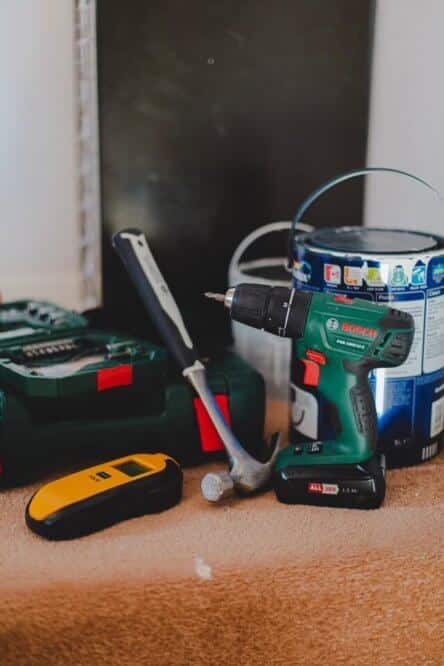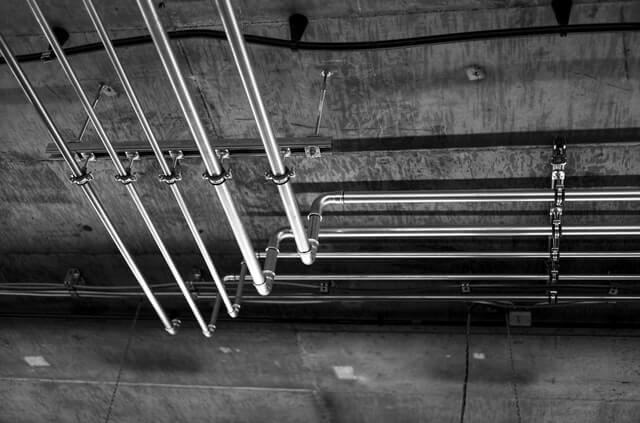Undoubtedly, air conditioners will play a vital function in your home. Going without air conditioning, especially in hotter regions, is a very sweaty experience. Due to the huge range of alternatives accessible in modern times might be difficult to select the proper air conditioner.
Regarding quality and selection, Rheem is one of the best, while Goodman air conditioners are more economical. Follow along while we evaluate Rheem vs Goodman air conditioners on price, style, and operation.
Rheem and Goodman are international names that have recently been pitted against one another. Rheem is the most well-known of the pair, having made a reputation for itself in other sectors.
Rheem is among the most reliable, long-lasting, and energy-efficient versions available. Goodman may not be as good in that regard, but it is a far more cost-effective alternative.
The necessity of finding an air conditioning unit that can perform in terms of performance and longevity cannot be overstated. It is among the most expensive household appliances; thus, maximizing its value is critical for homeowners. There are several differences to have in mind when comparing the two.
Rheem Company Introduction
Rheem has been a leader in heating systems products in North America and worldwide since its founding in 1925 by brothers Donald and Richard Rheem [1].
They are, in fact, North America’s largest maker of water heating appliances. The corporation has set a lofty goal of zero waste by 2025, and it appears to be on track to achieve it.
Four plants with no trash to dump and more than 2.5 million pounds of packing material eliminated every year are just a few of the astounding statistics. So even if you’re not concerned about the environment, sustainable items can save you money in the long run.
Rheem has a long reputation for innovation and firsts, having been the first to deploy scroll compressors across their whole product line (1994). They were the first company to use a remotely operated 14 SEER condenser in 1997. In addition, they were the first company to use a hybrid heat pump and water heater in 2009.
Goodman Company Introduction
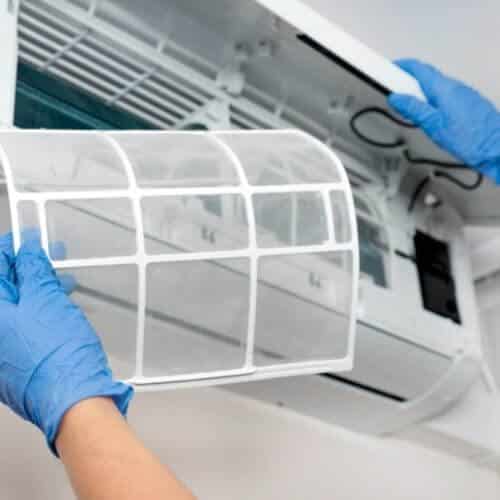
Goodman is a relatively newer company, having started in 1975 as a flexible duct and plastic blade register maker. Harold V. Goodman was an HVAC salesman with a vision of offering low-cost HVAC equipment to homes across the United States and beyond [2].
With Janitrol’s closure in 1982, Goodman got the chance to enter the industry, purchasing the necessary equipment to begin selling central air conditioning units and heat pumps. Goodman was acquired by Daikin Industries of Japan in 2012, although it remained an independent business.
Goodman’s operations are currently being relocated to a 4.1 million sq. ft. site outside Houston, Texas. The Daikin Texas Technology Park is the company’s single largest investment in its history.
Goodman, like Rheem, is devoted to the environment and has received ISO 14001 accreditation from Det Norske Veritas (DNV). In addition, their structure is LEED Gold certified (Leadership in Energy and Environmental Design).
Rheem vs Goodman: Differences

- Quality of the Air Conditioner
Rheem has established itself as a global leader in residential and commercial heating and cooling. Their goods are designed to provide maximum comfort. Many similar parameters apply to Goodman systems, but there is one key difference: SEER ratings.
A variety of criteria go into SEER ratings. Aesthetics, weather-resistant finishes, heating and cooling capacity, efficient ventilation, and noise reduction are all factors to consider. Goodman has a decent SEER rating of 18, while Rheem outperforms the competition with a 20.5 rating.
- Features
Three features in the two models are worth examining. First, an air conditioner’s humidity control, type of coils, and communication capabilities are all crucial features. Here’s how the two firms compare on these points.
- Controlling Humidity
Humidity might or might not be an issue depending on your location. However, not only does the air grow considerably heavier, but it also has ramifications for the homes and numerous other systems.
Humidity control is available from both Rheem and Goodman. The air conditioning unit fan will operate at a slower speed in the first few minutes after switching on the system. After that, the heat exchanger can remove humidity from the air by running at a slower rate.
- Coils
Another aspect where the two are nearly identical is this one. Copper coils with aluminum fins are used in both. Although there is a plan to move to aluminum coils for future models, this is the industry standard.
Copper is more easily mended than aluminum, which must be replaced totally. Nonetheless, the sector has been making the conversion to aluminum. When that transition occurs, both Rheem and Goodman are likely to make the changeover as well.
- Communication Ability
Once again, Goodman and Rheem have something in common. The objective is to cut down on the number of wires required to access the entire system. The setup’s diagnostics controls connect with the thermostat, allowing the user or a specialist to troubleshoot the problem.
This attribute is not available from every manufacturer; however, they will have other troubleshooting options. In this regard, Rheem and Goodman have the edge over some of their competitors.
Part Reliability
Rheem has a big advantage in this area. They have a significantly wider production footprint, with plants in the United States as well as internationally. That implies they have accessibility to some of the industry’s greatest specialists, engineers, and manufacturers. All of this adds up to a better, more dependable appliance.
Regarding quality control, Goodman adheres to industry norms, albeit their techniques have not been made public. On the other hand, Rheem prides itself on being “Tested.” “Trustworthy and tough.” If your air conditioner is a Rheem, you may rest assured that it will last.
Read Also: How to maintain your furnace
Aftermarket Parts
Despite Rheem air conditioners’ improved reliability and durability, things can and will always break. When it comes to replacing a component in your air conditioning unit, there are a few that you can perform yourself.
Aftermarket parts are available from various sources for both Goodman and Rheem. Check if the components are for high-efficiency models, as they might require a different part model.
- Warranty
It’s also crucial to have a good warranty. When something goes awry, being able to contact a specialist can help you get back up and running quickly. Furthermore, warranties offer peace of mind. It can make a big impact when it comes to choosing a brand.
Goodman provides a 10-year unit renewal guarantee and a lifetime compressor warranty. Take advantage of the latter, which is only valid if you register your device within 60 days after purchase.
Rheem, on the other hand, offers a little more extensive warranty. They come with a five-year parts warranty, a ten-year conditional parts warranty, a five-year conditional unit replacement guarantee, and a ten-year conditional unit replacement warranty. In addition, they have a larger assortment than Goodman, with various options based on consumer preferences.
Rheem vs Goodman: Similarities
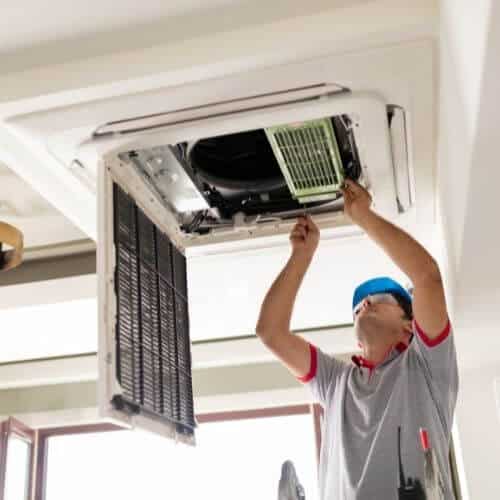
We’ve looked at the areas where each company shines brighter than the others. Let’s look at some of the commonalities.
- Concerns about the environment
The first thing you notice about Rheem and Goodman is that both companies are committed to environmental sustainability. Both organizations have made a concerted effort to employ more environmentally friendly materials in their manufacturing processes and reduce their overall ecological effect. Each has uniquely approached the topic but with comparable outcomes.
- Price Points
The HVAC systems produced by these two businesses have certain commonalities as well. Although Goodman is normally less expensive, their premium goods are comparable to Rheem’s. The SEER rating of the Rheem units is slightly greater.
- Warranties
Both firms provide equivalent parts and manufacturing failure warranties (10 years). In addition, you’ll get a labor warranty if you employ a Goodman-approved installer. The labor warranty, we believe, is Goodman’s attempt to mitigate reputational harm caused by bad installations that result in early equipment failure and increased repair costs.
- Reputation
Both companies have had their reputations tarnished due to improperly fitted HVAC units. In addition, because of the widespread availability of their products, some installers have enticed clients by giving low installation estimates but delivering subpar quality.
- Manufacturing in the United States
In the United States, both Goodman and Rheem make their own products. Rheem has various factories outside the United States, although its primary manufacturing base is still in the United States. These businesses began in America and have remained true to their roots even after being purchased by Japanese conglomerates.
You can anticipate either of these corporations to provide you with a high-quality, made-in-the-USA product at a competitive price compared to their closest competitors. Both companies serve the HVAC market’s mid-range segment, with Goodman focusing on the lower end and Rheem on the higher end. In addition, several of their products overlap in performance, dependability, and cost.
When to replace your air conditioner
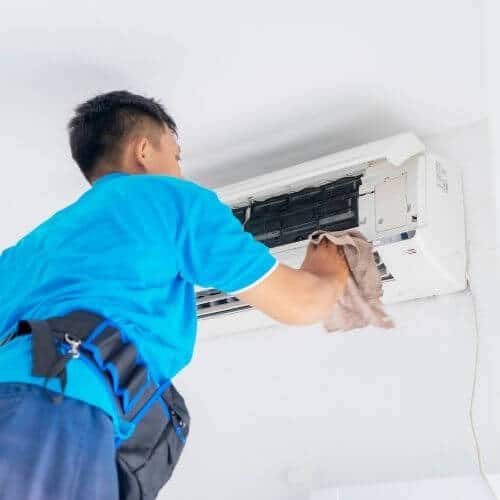
Even the most durable AC unit models may reach a point when they can no longer function. Whether the time comes or not, knowing when there is a simple issue that can be rectified versus when the entire unit needs replacement is beneficial.
Several telltale indicators show when it’s time for renewal. First, troubleshoot the problem to determine whether a repair can be made, as this is a much easier and less expensive choice.
- When the energy bill is high
Examine your monthly utility expenses. You might have noticed that your air – conditioning bills have been increasing in recent months [3].
There’s no need to worry about a small uptick now and then. On the other hand, a huge jump could suggest that your device is on the decline.
The higher utility bills indicate that the air conditioning unit is working harder to keep up with the heat. This shows that one of the elements within it may be failing. It may also be a sign of increased wear and tear.
When there is Moisture Buildup
All air conditioners, to some extent, produce moisture. Those that are working properly, on the other hand, should be capable of handling the moisture without you noticing. However, if humidity is around the air conditioning unit or drips from it, you are most likely contending with a refrigerant leakage [4].
Leaks in the refrigerant system might cause the system to underperform, resulting in higher energy expenses. Worse still, refrigerant spills can be hazardous to your family’s health. Allowing a small amount of water to accumulate around the AC unit might be a costly mistake.
Allowing moisture to collect near the air conditioner might lead to mold growth. In addition, when mold is prevalent, it can cause respiratory problems. Therefore, water accumulation near or around the air conditioner should not be overlooked.
The AC unit produces Weird sounds
The majority of air conditioners are relatively quiet. Sure, they make a lot of noise when they first startup, and you’ll undoubtedly hear the fan running every now and then. Any other noises could indicate a more serious problem or the need to be replaced.
Do not overlook any chattering, squeaking, or grinding noises emanating from your air conditioner. That isn’t natural aging; it’s a sign of a potentially serious problem. If weird sounds occur more frequently than once in a while, it’s time to fix the problem or hire a specialist to examine it.
There is Limited Airflow
Your air conditioner’s purpose is to keep your home cool. Your unit may need to be replaced if it stops working effectively. It could also be the most evident symptom of a malfunctioning air conditioner.
Most of the time, these are the consequence of a clog in the system. When clogs form, ventilation is impeded, and cold air cannot reach all rooms. Be aware that severe enough obstructions can cause damage to the device itself.
Read Also: Condesate Pump Overflowing
The Verdict
These are two excellent air conditioning manufacturers. You can never go wrong with any of them if it comes down to it. They have many similar internal components and have the same characteristics in their base models.
There are two primary considerations here: quality and price. When selecting an air conditioner, both of these characteristics are critical. Rheem is undoubtedly the greatest choice when it comes to overall quality. There’s a reason they’ve become one of the most recognizable names in the heating and cooling industry.
Goodman is a good alternative to explore if you seek a cost-friendly option. Their units are far less expensive than Rheem’s, making them ideal for individuals on a tight budget. In addition, the quality isn’t particularly poor; it isn’t on par with Rheem.

Michael Davis is a heating & plumbing expert who currently works as independent contractor in SC. He also writes for Plumbertip.
For almost 10 years he worked on various plumbing tasks across South Carolina.
